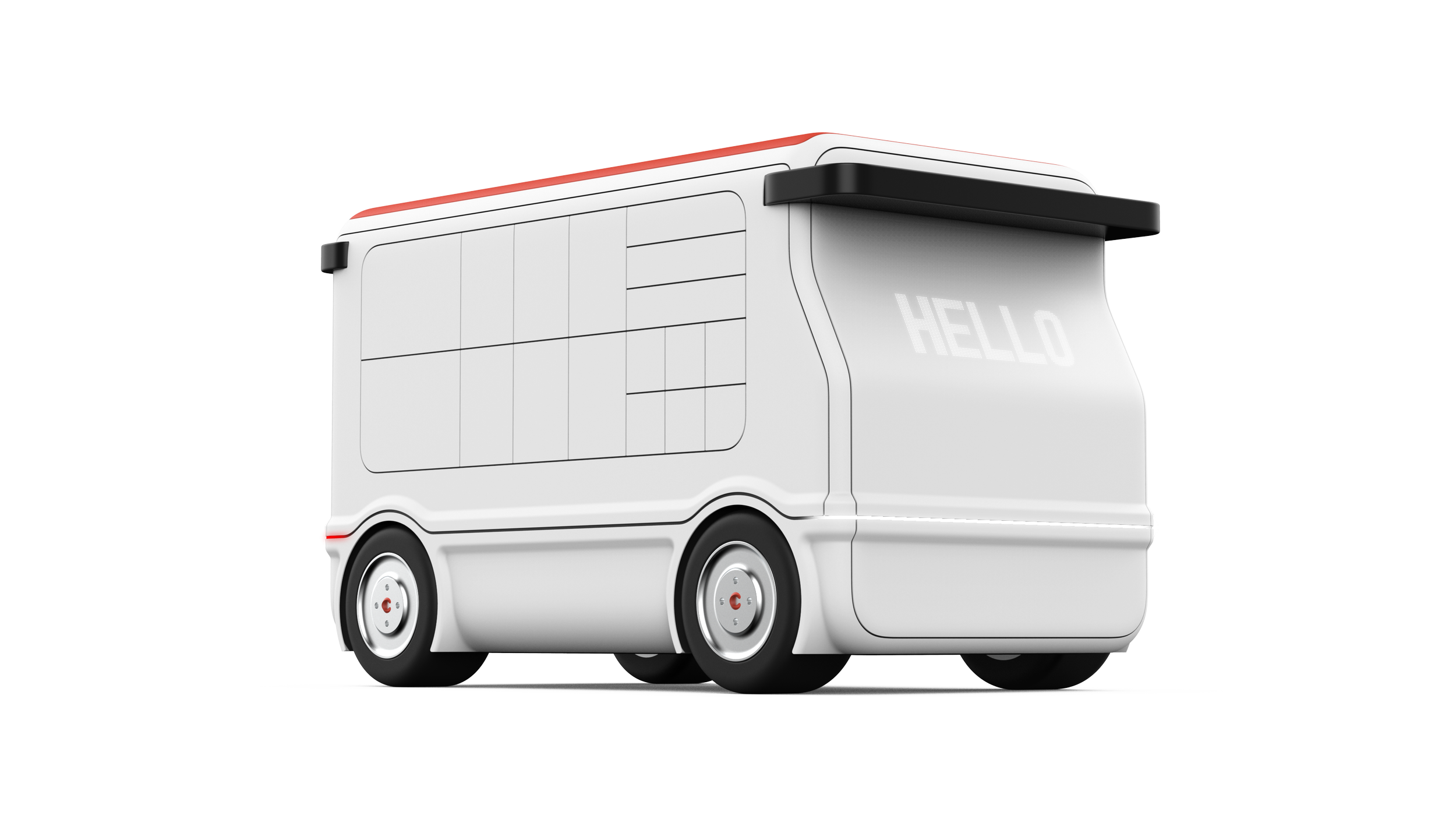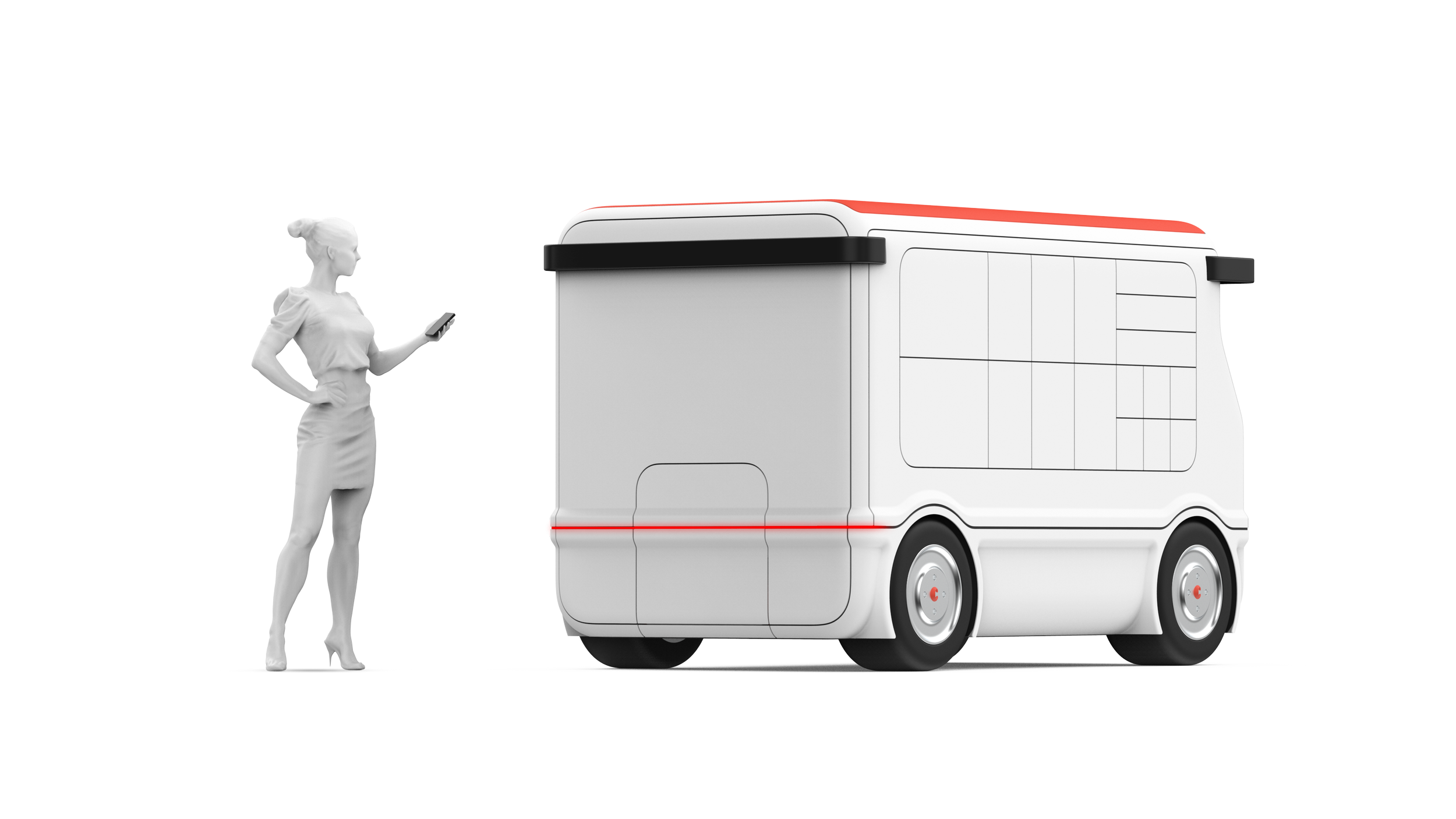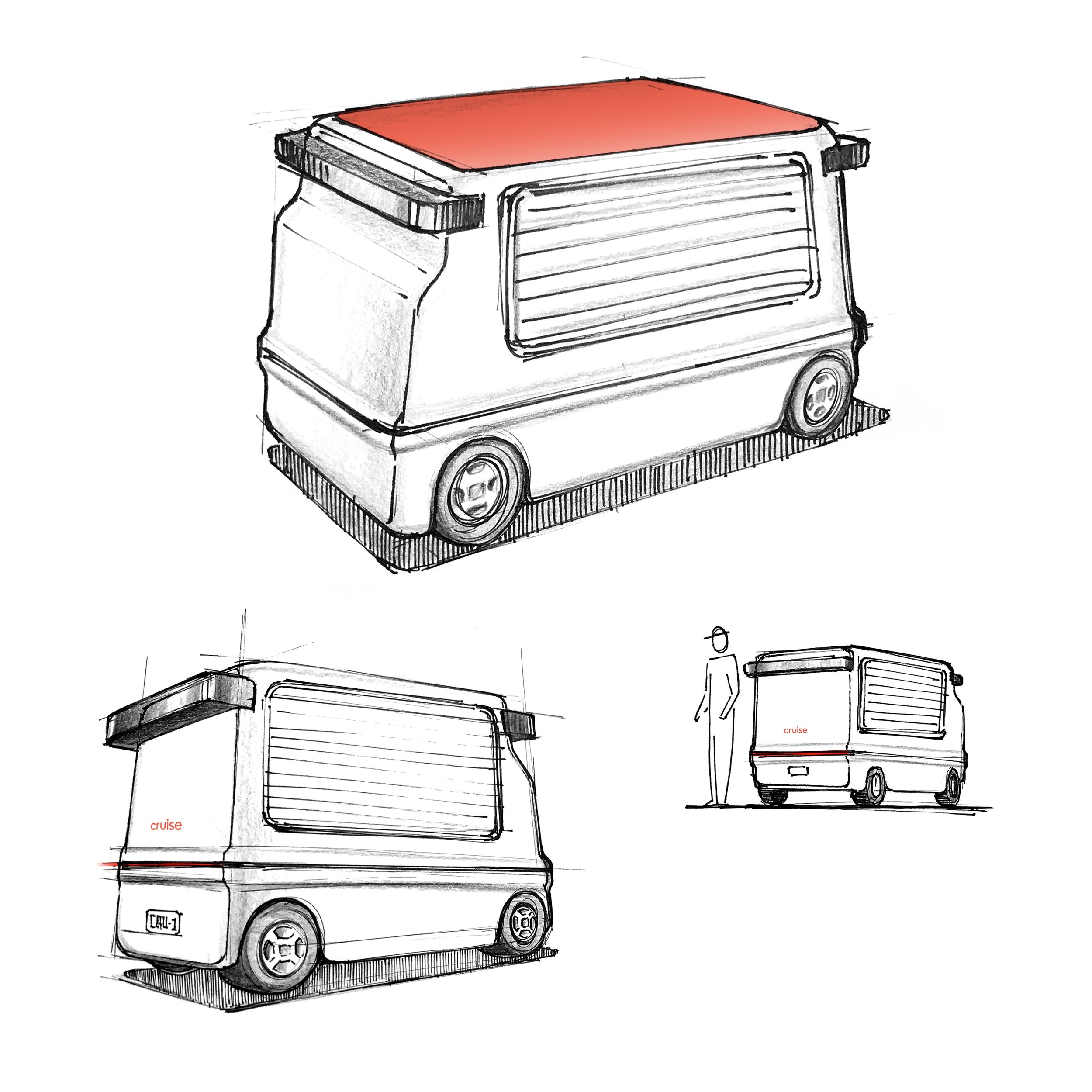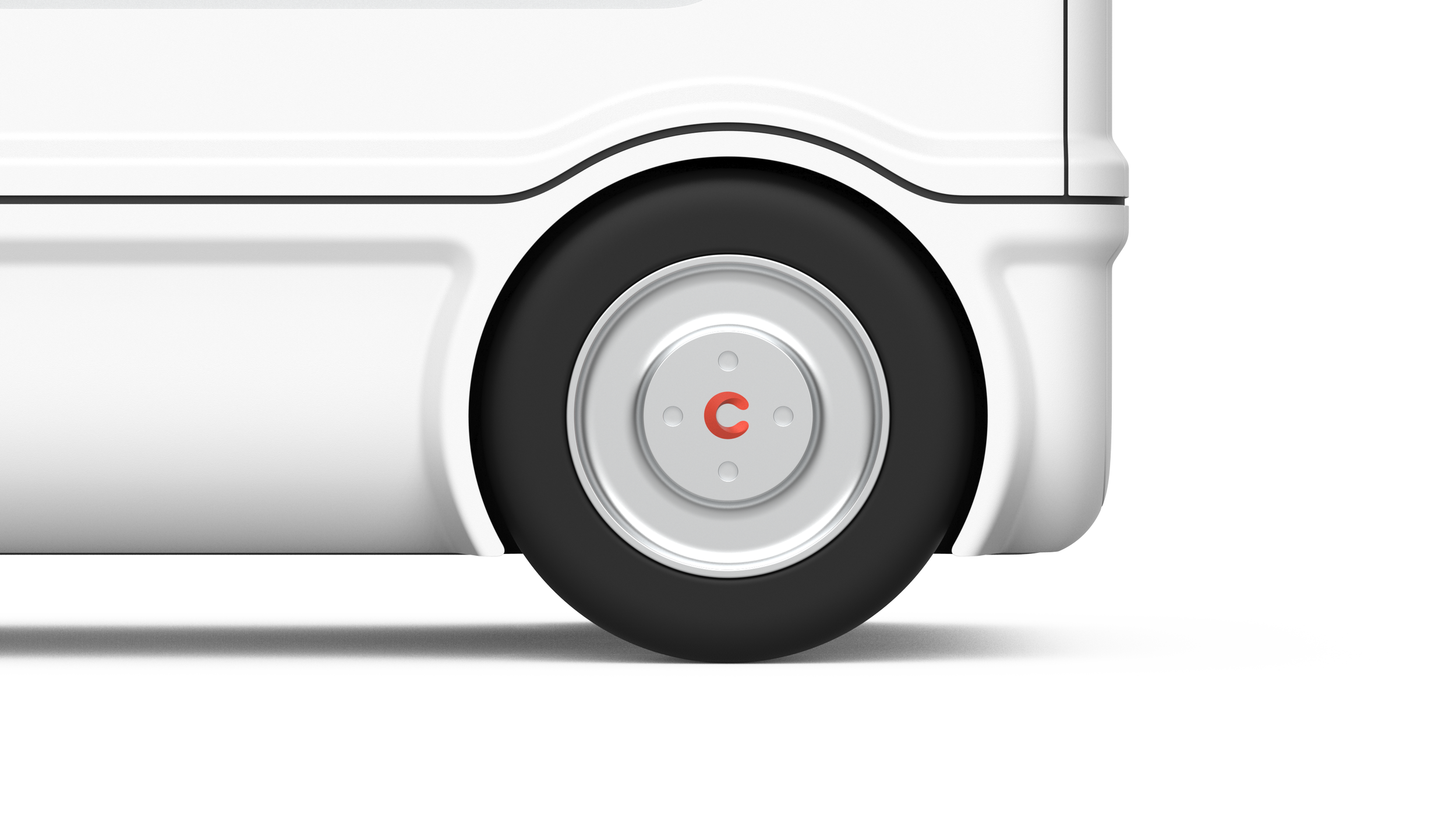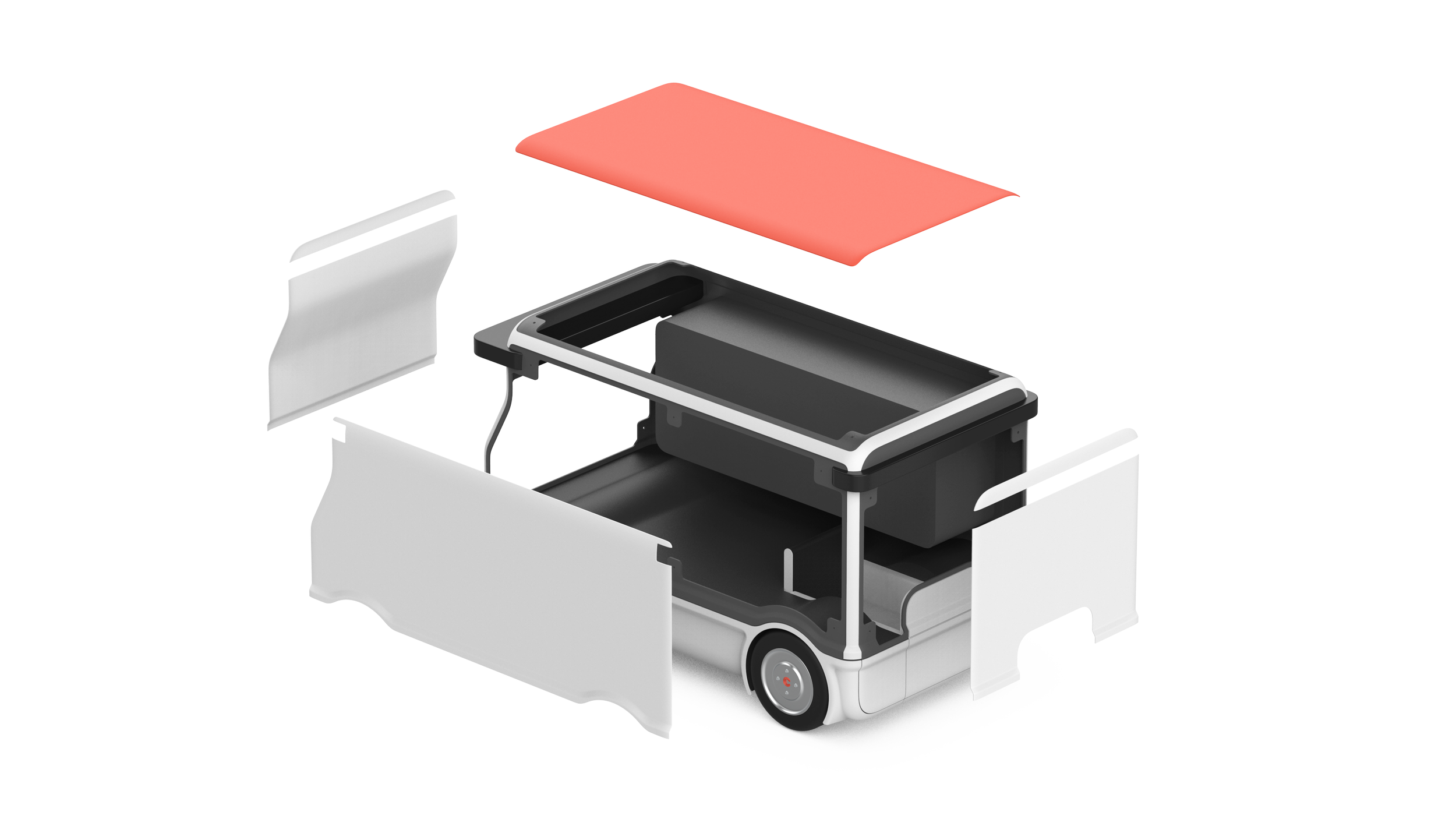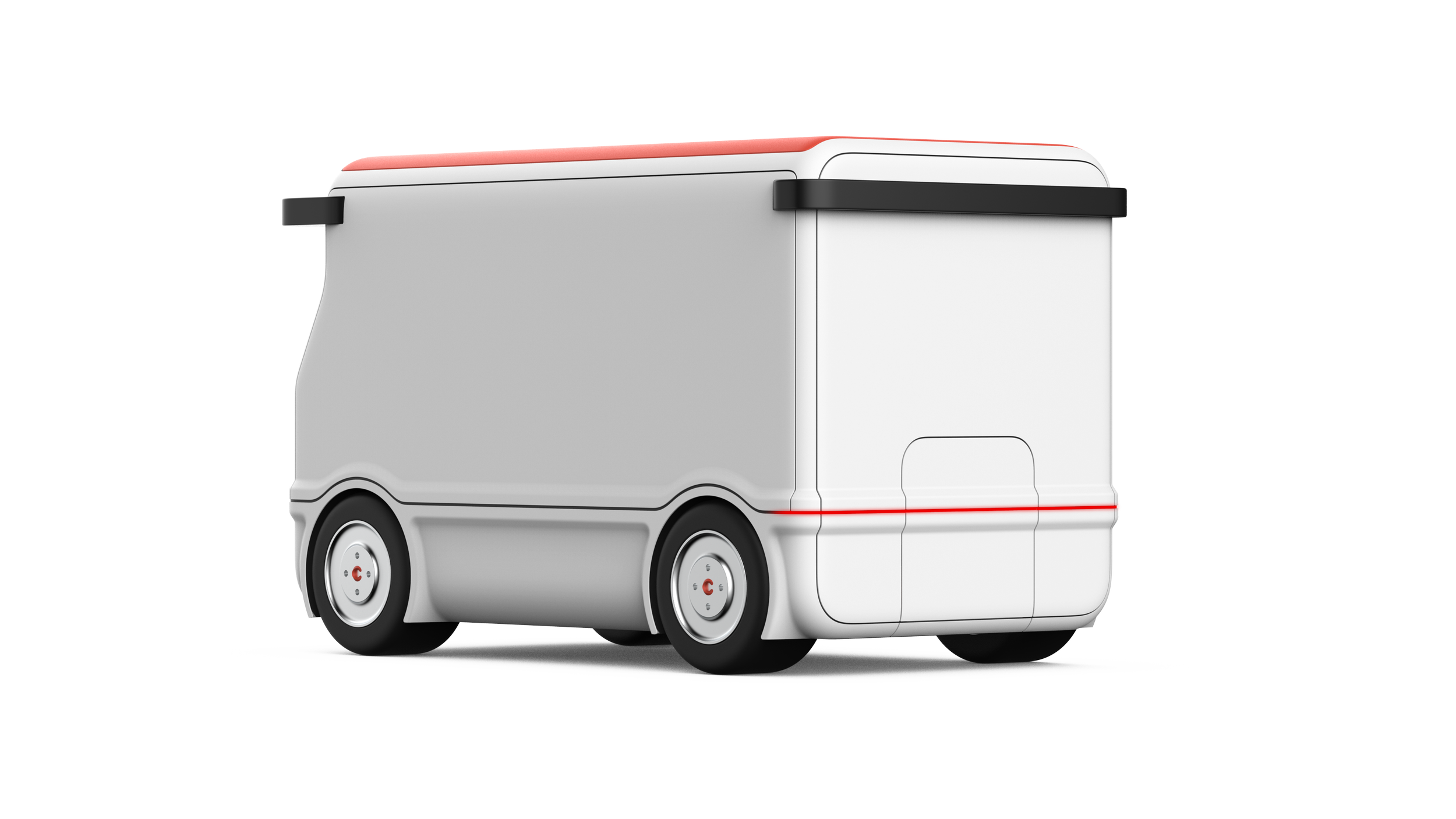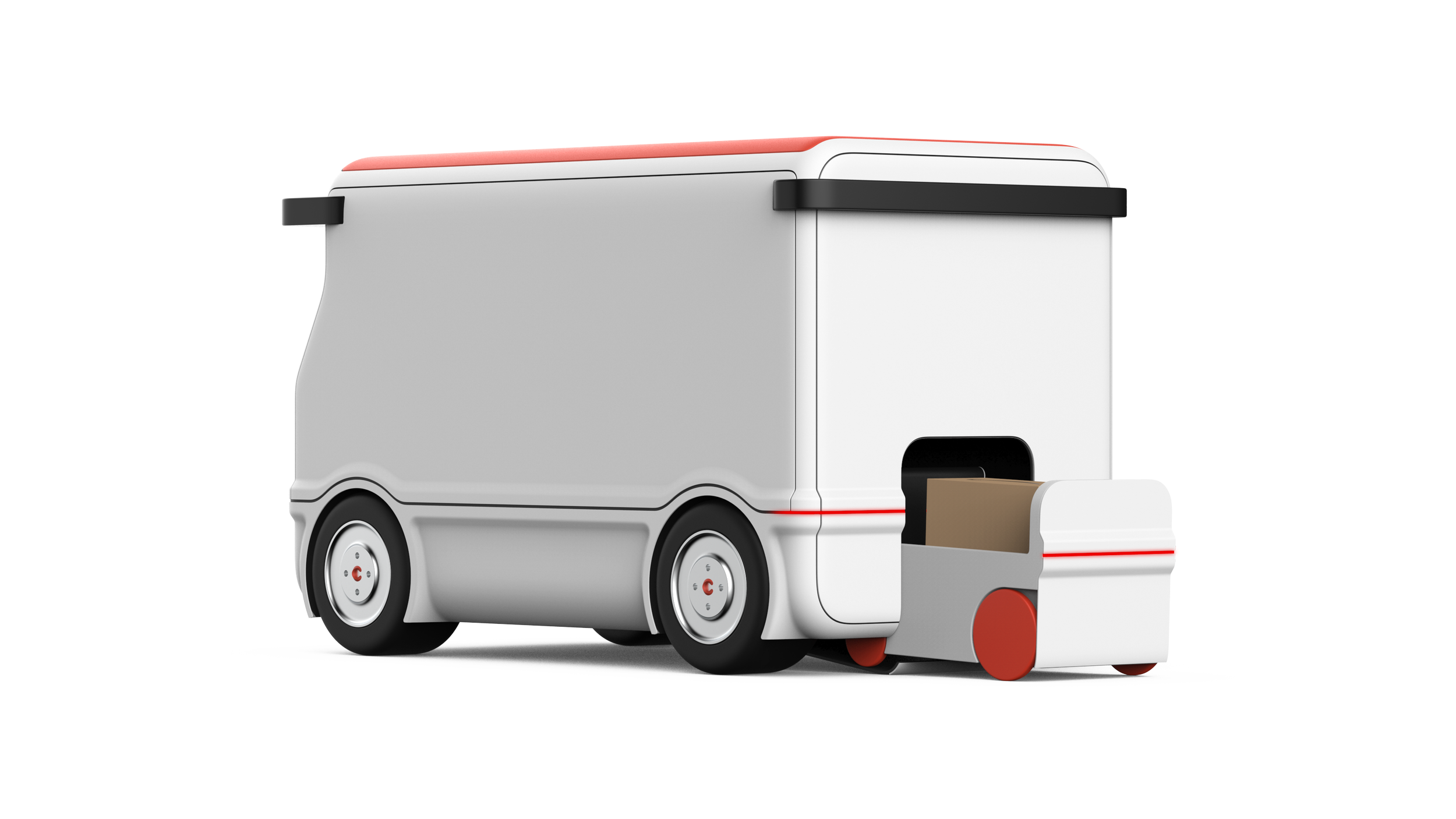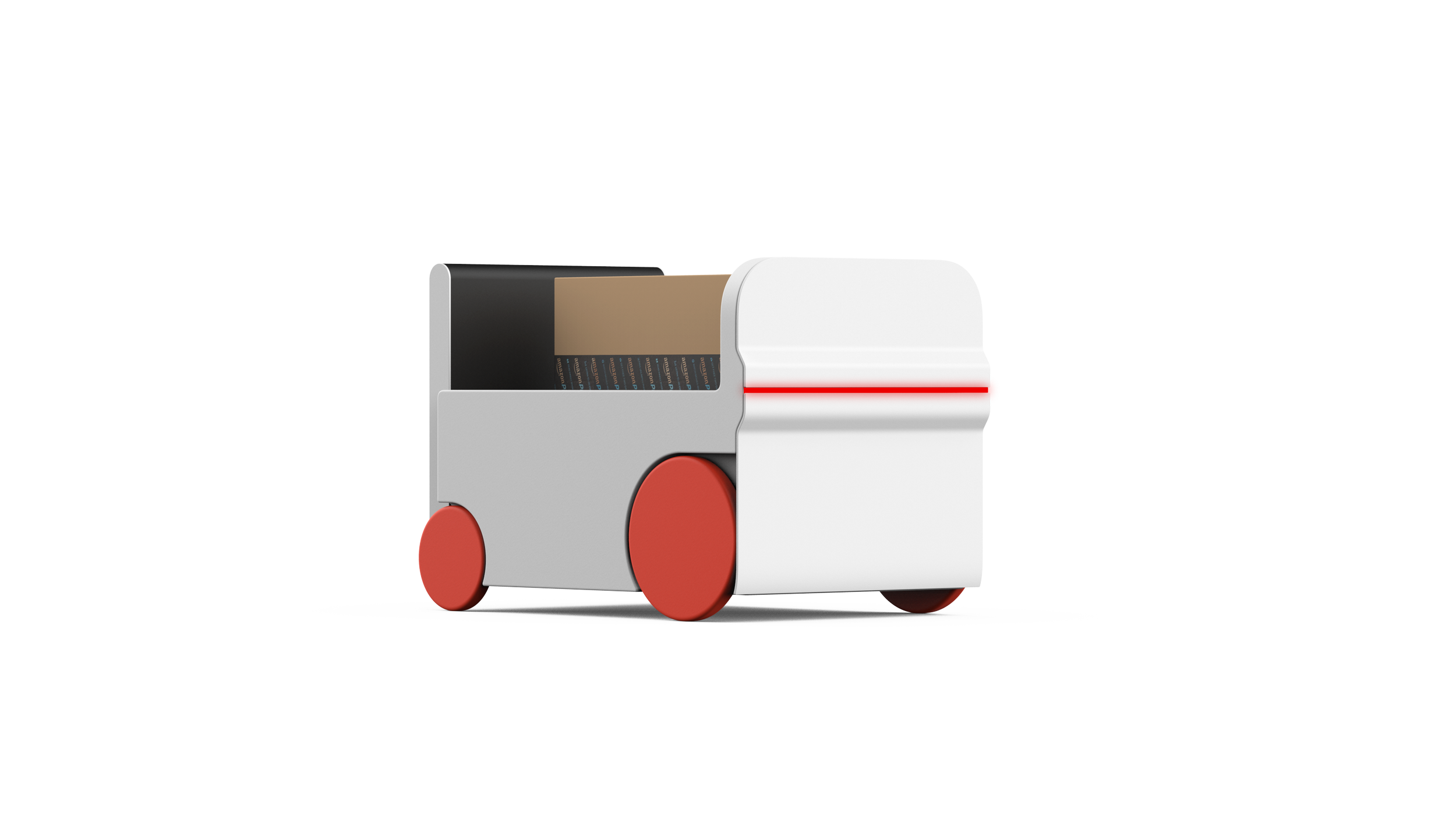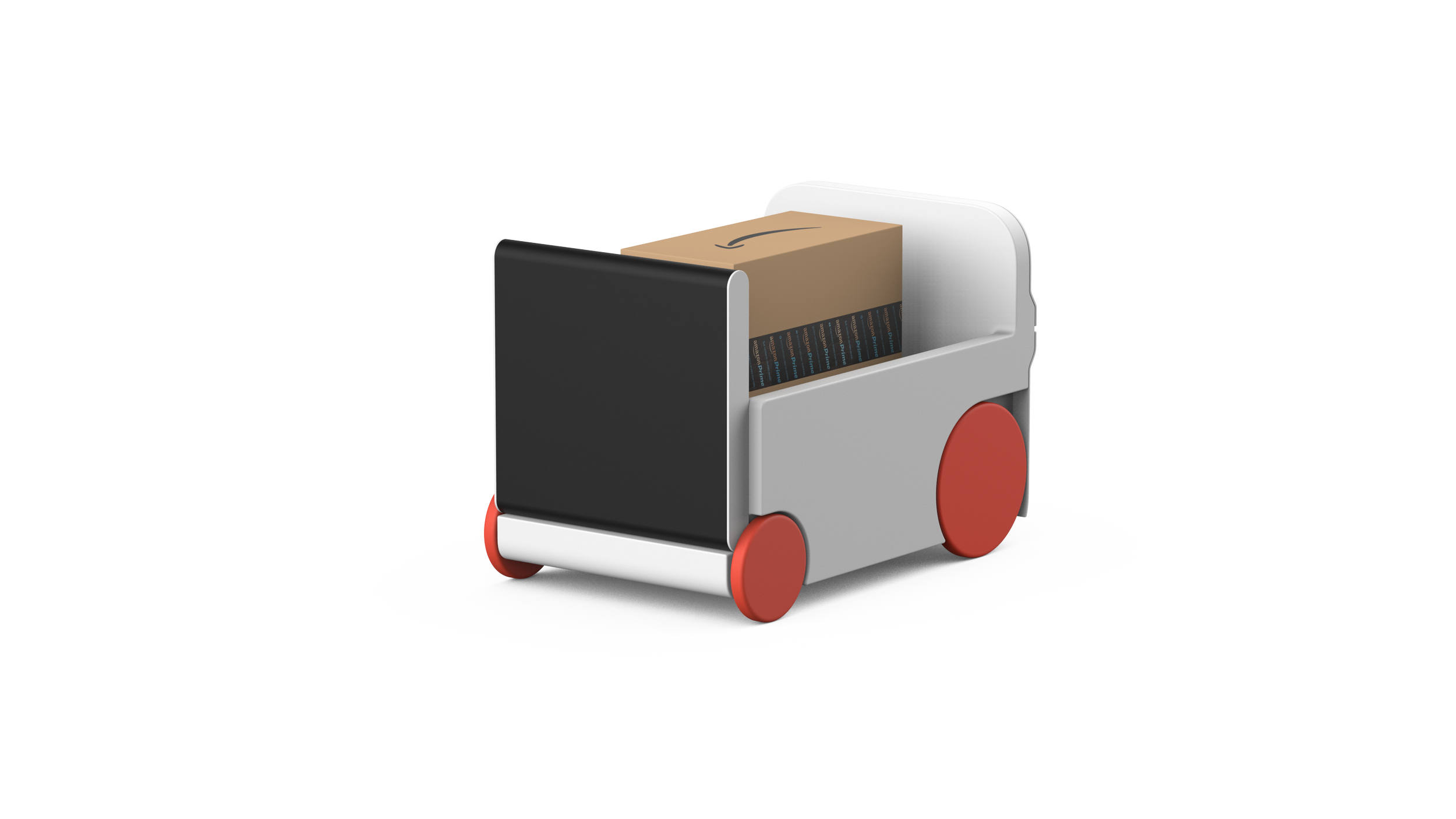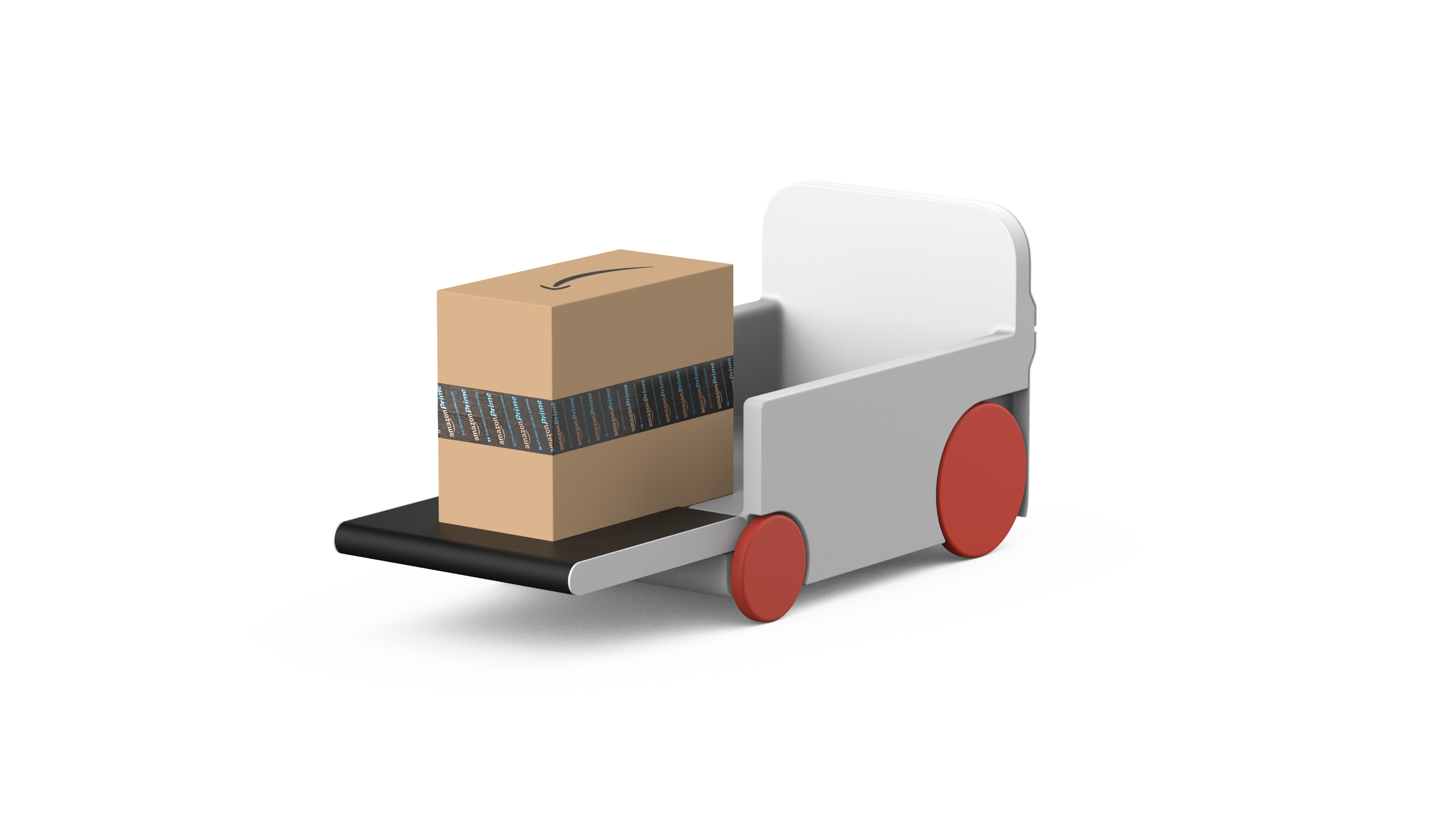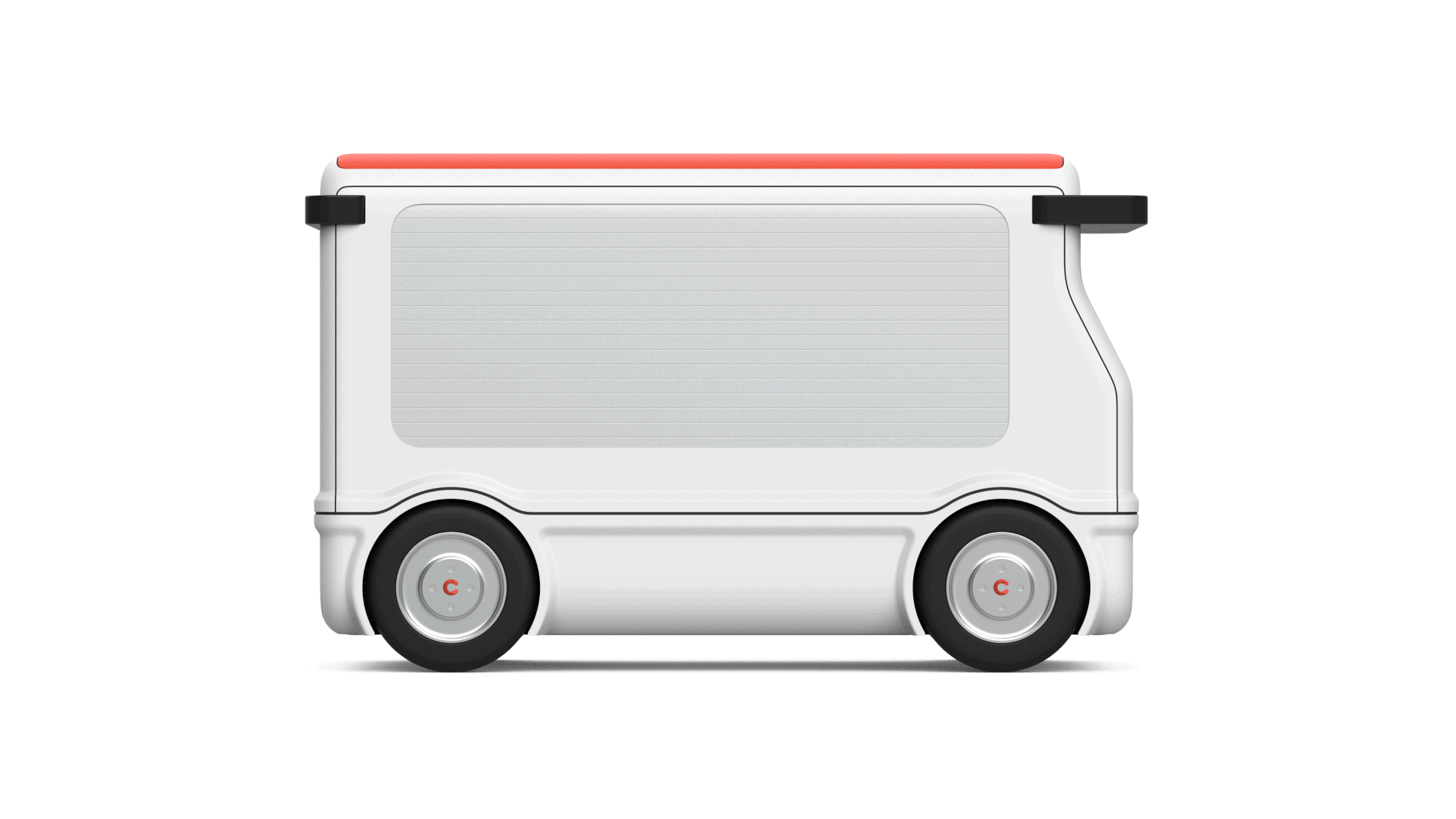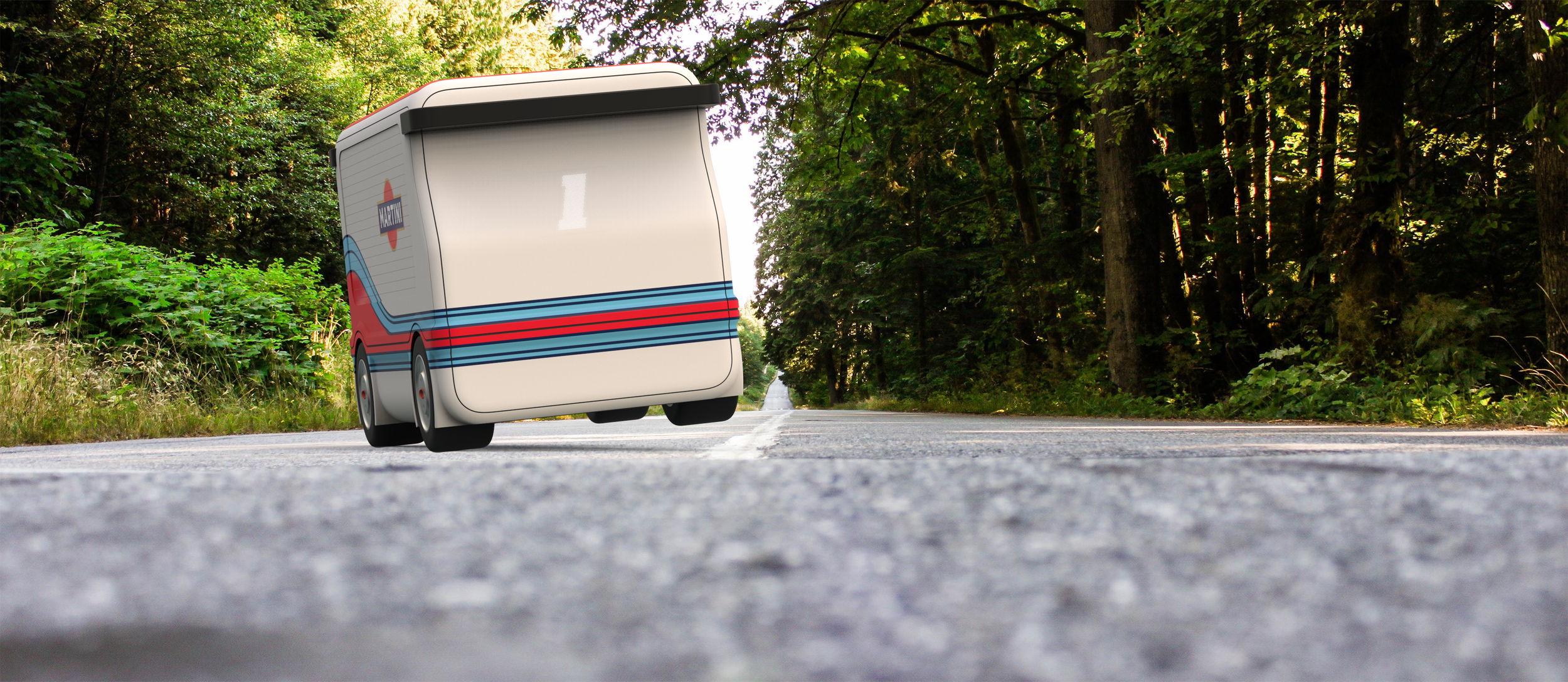ACV-01
Autonomous Cargo Vehicle
Role: Sketching, CAD, Rendering
Timeline: Two-day sprint
ACV-01 visualizes a purpose-built autonomous cargo vehicle for deliveries and point-of-sale. The van is small and non-threatening, to prevent unease from interacting with robots. It has a large modular opening on its side which can be configured as a single large opening or several smaller locker compartments. The sensors it uses to navigate are integrated into two slabs that intersect the body near the roofline, where they have the best visibility of the world around them. The shape of the front of the vehicle gives the van directionality and references the shape of USPS delivery vans, while also condensing the “hood” to emphasize that it is driverless and to prevent blocking the sensors’ view.
ACV-01 is designed to be a rugged and functional cargo vehicle. Its construction consists of a chassis and thermoformed plastic body panels, which provide a blank canvas for cobranding, and are easily replaceable and recyclable if damaged. The body incorporates a bumper features all the way around to allow it to be bumped by other cars in traffic. It feels distinctive yet related to the Cruise product lineup using its Cruise orange roof and cast aluminum wheels.
Headlights and taillights are LED strips embedded in the gaps between the body panels. An LED array sits where the windshield would normally be, and is used to greet customers or signal to other drivers.
The rear of the vehicle houses a small robot which carries packages from the curb to the doorstep. It uses a pivoting conveyor belt to hoist itself over stares and deposit packages autonomously. This robot solves the critical “Last Ten Feet” problem, which is a significant hurdle in the autonomous delivery experience.
